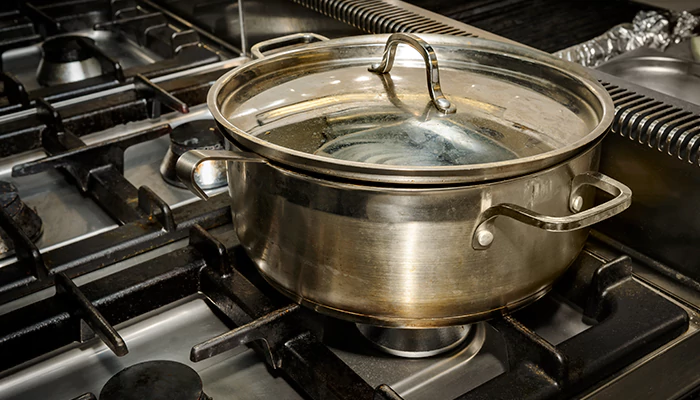Does Your Saucepan Get Burnt After Boiling Milk? Check Out Basic Solutions
Check out some practical tips and solutions to prevent and clean burnt saucepans when boiling milk.
- Rinks
- 27 June, 2025
- 2 mins ago

Does Your Saucepan Get Burnt After Boiling Milk? Check Out Basic Solutions
Check out some practical tips and solutions to prevent and clean burnt saucepans when boiling milk.
Boiling milk is a common kitchen task that can quickly become a hassle if it results in a burnt saucepan. The stubborn residue and scorched smell can be challenging to clean and often lead to damaged cookware. But why does this happen, and how can you prevent it? Fortunately, there are practical solutions to avoid burnt pans when boiling milk, and we'll explore some of the most effective methods to keep your cookware spotless.
Why does milk burn easily?
Before diving into the solutions, it's helpful to understand why milk burns so easily. Milk is a complex mixture of water, fats, proteins, and lactose (milk sugar). When heated, these components can react in ways that lead to burning:
Protein denaturation
As the milk heats up, the proteins (casein and whey) denature and form a film on the surface. This film can easily burn if not stirred regularly.
Lactose caramelization
The lactose in milk can caramelise at high temperatures, leading to a burnt, sticky residue.
Fat separation
Milk fats can separate and adhere to the hot surface of the pan, resulting in a burnt layer.
Preventative measures
To prevent burning milk and protect your saucepan, consider the following tips:
Use a thick-bottomed pan
A thick-bottomed pan distributes heat more evenly, reducing the risk of hot spots that can cause milk to burn. Stainless steel or heavy-duty non-stick pans are excellent choices.

Rinse the pan with cold water
Before adding milk, rinse the pan with cold water. This creates a thin layer of water between the pan and the milk, reducing the likelihood of sticking and burning.
Use low to medium heat
Milk burns easily at high temperatures. It's best to heat it slowly over low to medium heat. This gentle heating allows for even cooking and prevents the milk from scorching.
Stir frequently
Stirring the milk continuously while it heats helps distribute the heat evenly and prevents the proteins and sugars from settling on the bottom, which can lead to burning.
Use a double boiler
A double boiler is an excellent tool for heating milk gently. By placing a heatproof bowl over a pot of simmering water, you can avoid direct heat, reducing the risk of burning.
Add a spoon or plate
Placing a metal spoon or a small plate in the pan can help prevent milk from boiling over and burning. The object disrupts the formation of bubbles and keeps the milk from scorching at the bottom.
Cleaning a burnt pan
If you find yourself with a burnt pan despite your best efforts, don't despair. Here are some effective methods for cleaning it:
Baking soda and vinegar
One of the most effective cleaning methods involves baking soda and vinegar. Sprinkle a generous amount of baking soda on the burnt area, then add a mixture of vinegar and water. Let it sit for 15-20 minutes, then scrub with a non-abrasive sponge.
Boiling water and baking soda
For tough burns, fill the pan with water and bring it to a boil. Add a few tablespoons of baking soda and let it simmer for 10-15 minutes. This method helps loosen burnt particles, making them easier to clean.
Commercial cleaners
If home remedies aren't effective, consider using a commercial cleaner specifically designed for burnt cookware. Follow the instructions on the product for the best results.
Boiling milk without burning your saucepan may seem challenging, but with the right techniques and tools, it’s entirely manageable. By using a thick-bottomed pan, heating milk slowly, and stirring frequently, you can prevent burning and enjoy perfectly heated milk every time. And if things go awry, remember that effective cleaning methods can restore your cookware to its original condition. With these tips in mind, you'll be well-equipped to handle boiling milk without the hassle of burnt pans.









